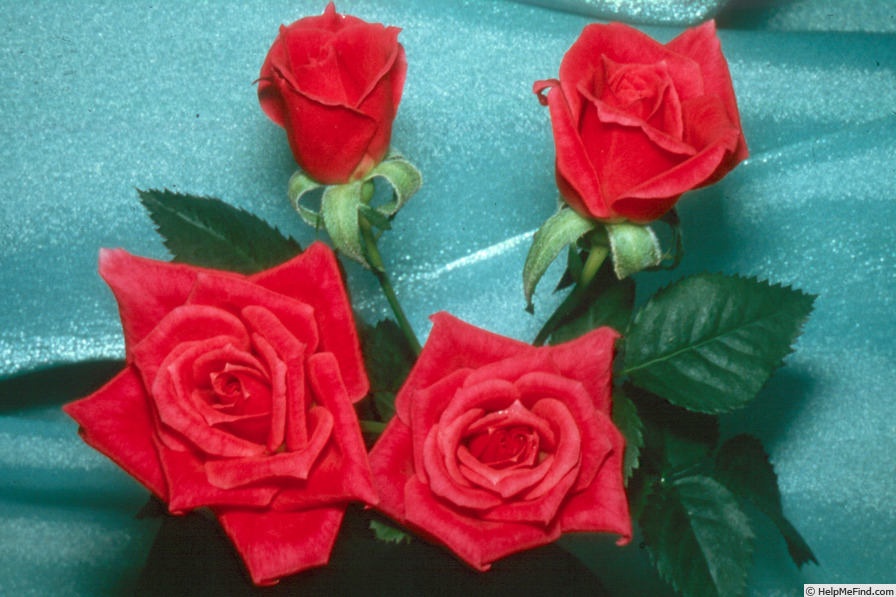|
|
'LAVcale' rose Description

Photo courtesy of Margit Schowalter
HMF Ratings:
11 favorite votes.
Average rating:
EXCELLENT.
Bloom:
Red. None / no fragrance. 30 to 35 petals. Average diameter 1.5". Large, double (17-25 petals), cupped-to-flat bloom form. Blooms in flushes throughout the season.
Habit:
Medium, compact, upright. Medium, semi-glossy, medium green foliage.
Height: 1' to 20" (30 to 50cm).
Growing:
USDA zone 4b through 10b. Can be used for beds and borders, container rose, cut flower or garden. Shade tolerant. Disease susceptibility: very disease resistant. Spring Pruning: Remove old canes and dead or diseased wood and cut back canes that cross. In warmer climates, cut back the remaining canes by about one-third. In colder areas, you'll probably find you'll have to prune a little more than that. Requires spring freeze protection (see glossary - Spring freeze protection) .
Patents:
New Zealand - Patent No: 575 on 5 Jul 1991 Application No: ROS305 on 31 Mar 1989 Trade Name: Mountie. United States - Patent No: PP 6,054 on 8 Dec 1987 VIEW USPTO PATENTApplication No: 06/801,700 on 25 Nov 1985 Rose plant named Lavcale
Keith Laver, Caledon East, Canada
... unusually stable red flower coloring... Parentage: 'Party Girl' x 'Dwarfking 78'... Recurrent... Average bloom size when fully expanded -- about 1-1/4 to 1-1/2 inches... Number of petals: about 30 to 35... Fragrance: None... Lasting quality: Very long on plant and as cut flower... Hips: None observed... Height: About 12 to 15 inches... Average resistance to disease... Requires ordinary winter protection in extreme climates...
|